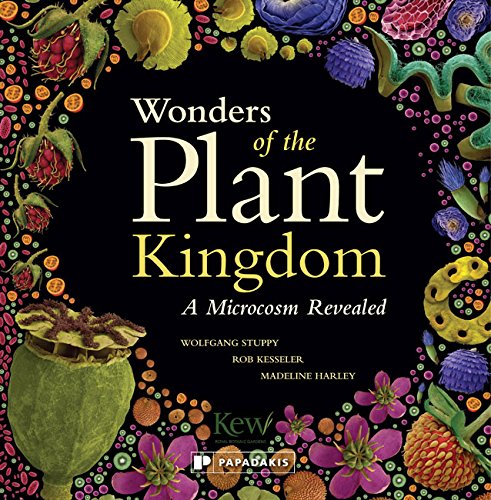
The splendour of plants is everywhere. Their colourful flowers, fruits and seeds have fascinated people since the advent of mankind.Plants provide nourishment for our bodies and souls.
With the help of protists and fungi, plants provide the oxygen we breathe and the food that sustains us — either directly or indirectly, by feeding other animals. Plants provide shade over our heads and cool carpets under our feet while surrounding us with beautiful colors and marking the change of seasons.
Because they cannot move, plants must be extremely responsive to environmental cues and have their life cycle in perfect synchrony with the seasons. Plants must tide over inhospitable dry seasons or winters as seeds, bulbs etc or in the case of some trees in a “bare-bones” leafless state. A plant cannot simply pick up itself like an animal and get out of the rain!
Plants are classified into 12 phyla or divisions based largely on reproductive characteristics; they are classified by tissue structure into non-vascular (mosses) and vascular plants (all others); by “seed” structure into those that reproduce through naked seeds, covered seeds, or spores; or by stature divided into mosses, ferns, shrubs and vines, trees, and herbs.
Lower plants usually include algae and Bryophytes, while higher plants refer to Pteridophytes, Gymnosperms and Angiosperms.
Vascular plants or Trachaeophytes are those with vascular tissue (xylem & phloem).
Embryophytes are plants that bear an embryo and are synonymous with land plants.
The kingdom Plantae accounts for the largest proportion of the earth’s biomass with its approximately 250,000 species of mosses, liverworts, ferns, flowers, bushes, vines, trees, and other plants. Aquatic and terrestrial plants are the basis of all food webs. They contribute life-supporting oxygen to the atmosphere and provide humans with the fossil fuels, medicines, and other substances so important to our present existence.
Plant Classification
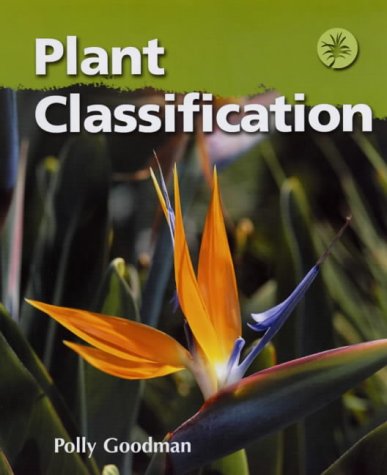
The number of different kinds of plants is exceedingly great; scientists are faced with an estimated total of 300,000.Furthermore scientists’ still have much to learn about the world’s plants. Scientists’estimate that 15-20% of plant species have not yet been described and at present, approximately 2,000 new species of plants are discovered per annum. It has been estimated that there are over 14 million living species on Earth, though only 1.8 million have been given botanical names.
1.Angiosperms (now Magnoliophyta) – Flowering Plants
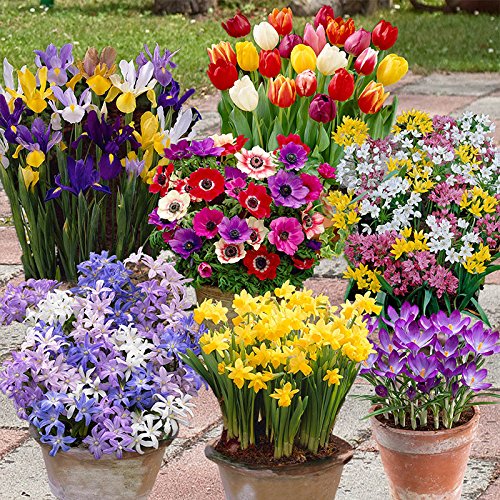
300 Spring Flowering Bulb Offer. 8 colourful varieties to bring your garden life next spring.
Easily the best known group of plants, the great majority of plants that you can name or eat or use in any way are flowering plants. They are defined by having flowers, seeds that have a food source called the endosperm and are surrounded by a fruit.
The fruit may be fleshy and juicy as the word “fruit” implies or be a pod as in beans and peas or dry and hard like an acorn or walnut (though what we call the nut is actually the seed, the actual fruit is fleshy and disposed of). The flowering plants are the most recently evolved major group of plants.
Flowering plants can be subdivided into two groups, the monocotyledons and dicotyledons. The name refers to the “seed leaves” these are the first leaves that emerge from the germinating seed, monocots producing one seed leaf and dicots producing two.
This sounds like a small difference but has more significant consequences when the plants grow. Dicots are sometimes called “broad leaved” plants for obvious reasons, if you look at a leaf from such a plant the veins diverge from a large central vein, monocots by comparison have veins that are parallel, the leaves of these are often long and thin.
Angiosperm Examples:
Monocotyledons: All kinds of grasses including wheat, rice, maize, oats, barley and other cereals. Also, bamboos, sugar cane, all kinds of palms, onions and the onion family such as leeks and garlic, lilies, daffodils, tulip, hyacinths.
Dicotyledons: Roses, oaks, beeches, mahogany, ebony, teak, lemons and other citrus, eucalyptus, cacti, acacias, grapes, peas and beans, apples, plums, mangoes, peaches, durian, potatoes, carrots, parsnips.
2.Gymnosperms (now Pinospsida) – Conifers

Mixed Lot of 10 Conifer Plants in 7cm Pots – Ornimental Conifers Trees – Evergreen Plants
Gymnosperm means “naked seed” as the seeds are not produced inside a fruit as they are in the flowering plants.Gymnosperms don’t make flowers, the pollen being produced from male cones.
The group are mainly evergreen woody shrubs and trees, though as in any group, not all members follow the commonest pattern. Conifers are mainly known as pines, firs and cypresses, they are the amongst the commonest of all trees featuring in most woodlands though being generally uncommon in the tropics and more common towards the poles.
It is estimated that about one in every three trees on earth is a Siberian Larch, a deciduous conifer, they live mainly in the vast circumpolar taiga forests of Canada and Russia. Many conifers grow into massive trees.
You will probably be very familiar with using conifers as a product, they are used in huge quantities to make all kinds of paper and for building material. If you look around you now, you may see something that is made from conifers, the desk you are working at maybe, the floor, the roof above your head. The most famous use of conifers though is probably as Christmas trees.
Gymnosperm Examples
All pines and fir trees, larch, cypress, Cedar of Lebanon, redwoods, yews.
3.Algae

The algae are not a natural group in that they are more or less what is left after the easier to recognize groups are taken out. They are therefore incredibly varied in habit, habitat, size and appearance from microscopic to what you would recognize as normal plant size.
They are most commonly seen as sea weeds and also wherever there is a green film of growth on anything. They make up nearly all of the phytoplankton in the worlds oceans and other bodies of water which between them make about half of all the oxygen produced by photosynthesis on earth.Very varied in size from single celled to giant kelp 65m long.
Simple plants without true stems, leaves or roots.
Live in aquatic habitats or moist conditions such as on damp rocks, soil or wood.
Algae Examples
Instance pond weed is algae of different forms, wherever you live in the world green weed will form on the surface of ponds while it will be different in different places, it will almost undoubtedly be algae, especially if it’s that yucky stringy stuff.
Also, sea weed, kelp, bladder-wrack, diatoms (phytoplankton), snow algae. Algae is often green but can be almost any shade of brown, red, yellow, though it is more commonly drab than bright (apart from the many bright greens).
4.Bryophytes – Mosses and Liverworts

Guide to Mosses and Liverworts of Woodlands (Chart)
Liverworts are not so common plants that live in damp places, to see them you have to know what you’re looking for and where to look, they tend to be just a centimeter or two high, though they creep as they grow and reproduce (they can’t physically move!) and can cover large areas in this manner.
Mosses on the other hand are a lot more common and visible (if you live in a temperate climate zone, they may be growing on the roof of your house). Mosses too like to live in damp conditions, though can withstand some drying out. What they are often best at is growing in difficult places where other plants struggle, they aren’t very good at competing in good conditions.
You will find mosses in the undergrowth of woods almost everywhere in the world. They are also responsible for the formation of peat in peat bogs and are commonly found in wetlands, bogs, marshes, moors and anywhere that it is wet and/or shady, they might also be growing in your temperate lawn if you have one.
Bryophyte Examples
Sphagnum moss which has a neat trick of exchanging a hydrogen ion for other ions it takes up (such as potassium and calcium) so making the place where it grows more acidic, other plants often find conditions very difficult, but sphagnum moss loves it like that. Not Spanish Moss, that’s a flowering plant.
5.Pteridophytes – Ferns, Clubmosses, Horsetails
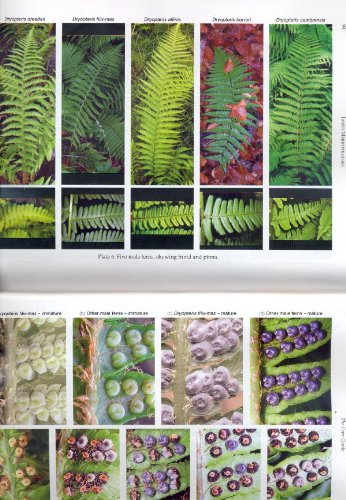
The modern Pteridophytes are what is left of a once mighty dynasty. In the Carboniferous period from 360-300 million years ago, it was mainly giant Pteridophytes that were growing in great number and then dying and falling over in swamps to become buried and form what became the coal reserves of the world.
These weren’t the small plants that we have today that tend to live in out of the way places, but mighty tree-like versions 20-30m tall with trunks of 1-1.5m in diameter that ruled the plant world like no others. As time went on, they were largely replaced by flowering plants that were able to adapt better and faster to changing conditions until they were no longer the dominant forms of trees and large plants of the planet.
There are still some tree ferns that grow to 30m tall, though they are geographically isolated and not at all a representative of the group. Most members of the group are ferns with often finely divided leaves that are frequently used as decorative garden and house plants. They tend to frequent damp but not wet places and can often grow with relatively little light beneath trees or inside gullies where no direct sunlight ever reaches.
Pteridophyte Examples
Bracken, tree fern, ground pine, most of the species aren’t very well known and often have descriptive names: alpine clubmoss, silver fern, great horsetail etc.
Plant Habitats
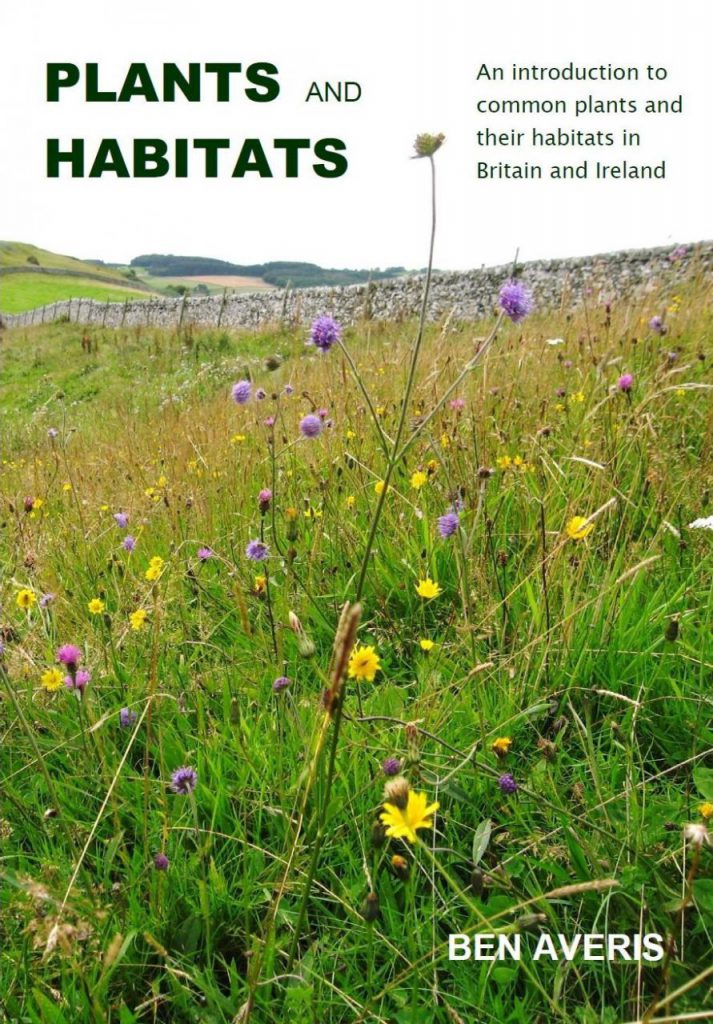
Plants and Habitats: An Introduction to Common Plants and Their Habitats in Britain and Ireland
Plants live in places where the climate is rightly suitable for them. They need right kind of soil too.There are five main types of nutrients that plants use these are: Nitrogen, Phosphorous, Potassium, Calcium, and Magnesium. Nutrients are substances that provide energy and materials for plants to grow.
Different plants need different climatic conditions. Some plants grow in hot deserts and some in very cold places. Some plants grow in water, some underwater, some on hills and some even grow on other trees. The living or dwelling place of a plant or an animal is known as its habitat.
Plants have adaptations to help them survive (live and grow) in different areas. These adaptations might make it very difficult for the plant to survive in a different place. This explains why certain plants are found in one area, but not in another.
Some of the main threats to the survival of plants include a lack of sunlight, a lack of water, a lack of good soil and a proper space. In the same way an abundance of water, air, solar radiation (UV rays) and the activities of animals are also harmful for plants. There are many challenges that plants face in order to survive.
How well plants adapt to their changing environments will determine their future. It is important to remember, that almost all other living things rely on plants in some way .
The conservation of plants must be achieved by protecting their habitats, since plants do not occur in isolation, but as part of a living biological community.
All living things contribute to the ecology and are vital to its health and continuation. Despite our advances in technology we as human beings still rely on our environment to provide many of the things necessary to our survival.
The Earth’s biodiversity supports all life including that of humans. Our food, medicines, energy sources, textiles and building materials are all derived directly or indirectly from living organisms. Our way of life is inextricably linked to the natural world!
If you have any information,questions, or feedback you would like to include in this webpage.
Please email momo19@naturekingdoms.com or leave your comments below.